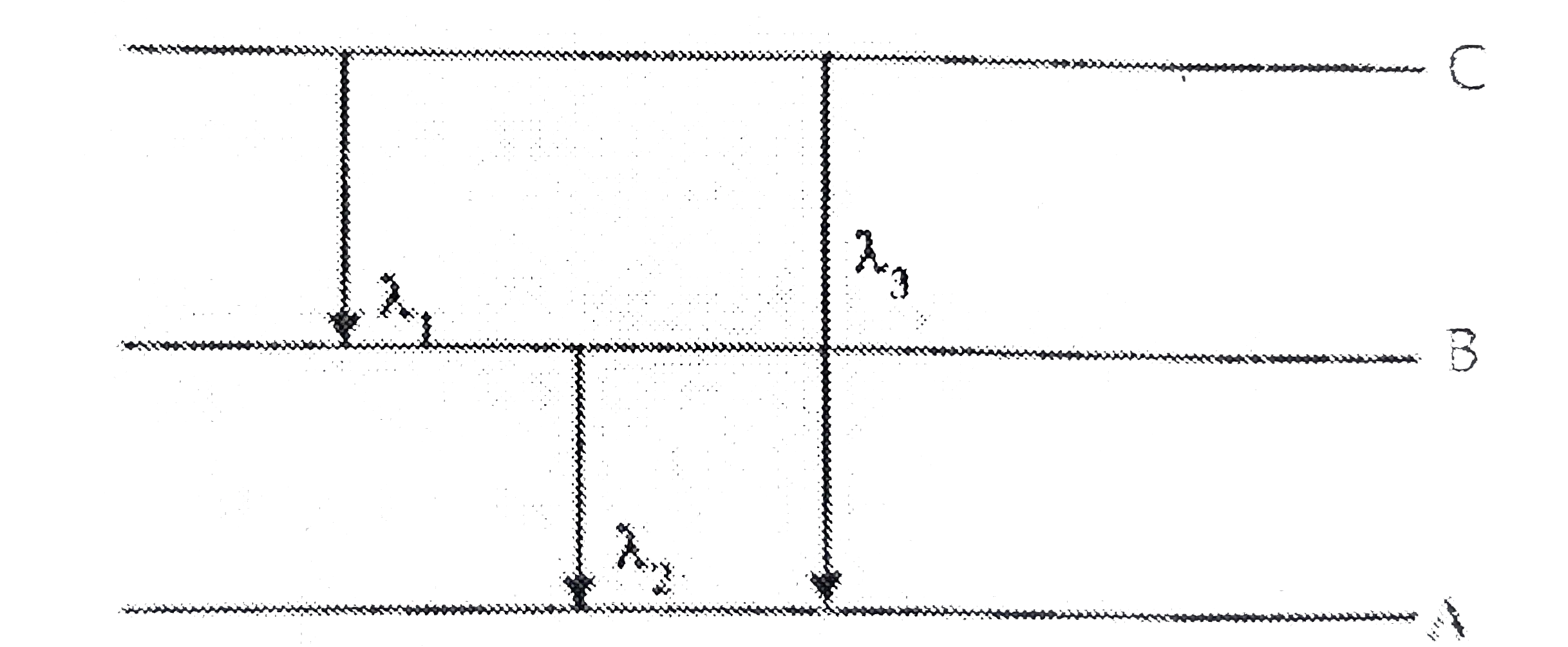State de-Broglie hypothesis.
Moving object sometimes acts as a wave and sometimes as a particle, or a wave is associated with the moving particle, which controls the particle in every respect.
This wave associated with the moving particle is called matter wave or de-Broglie wave, its wavelength is given by
λ=hp=hmv.
Similar Questions
What is de Broglie hypothesis? What conclusion can be drawn from Davisson and Germer’s experiment?
View Solution(i) State Bohr's quantization condition for defining stationary orbits . How does de- Broglie hypothesis explain the stationary orbits ?
(ii) find the relation beween the three wavelengths
λ1,λ2 and λ3 from the energy level diagram shown :

View SolutionChoose the correct alternatives
A. Ratio of de-Broglie wavelengths of proton and α-particle of same kinetic energy is 2L1
B. if neutron, α-particle and β-particle all are moving with same kinetic energy , β-particle has maximum de-Broglie wavelength
C. de-Broglie hypothesis treats particles as waves
D. de-Broglie hypothesis treats waves as made of particles
View SolutionDerive Bohr's quantisation condition for angular momentum of orbiting electron in hydrogen atom using De Broglie's hypothesis.
View SolutionState Avogadro's hypothesis.
View SolutionState Atomic hypothesis.
View SolutionState how de-Broglie wavelength (λ) of moving particles varies with their linear momentum (P).
View SolutionFor particles having same K.E., the de-Broglie wavelength is
View SolutionIf the kinetic energy of a moving particle is E , then the de-Broglie wavelength is
View Solution(i) State how de - Broglie wavelength (λ) of moving particles varies with their linear momentum (p).
(ii) State any one phenomenon in which moving particles exhibit wave nature.
View Solution